Key takeaways:
- Web development services are crucial for creating user-friendly and visually appealing websites, emphasizing mobile responsiveness and accessibility.
- REST architecture focuses on stateless communication and simplicity with multiple endpoints, while GraphQL allows for more efficient data retrieval through a single endpoint with customizable queries.
- GraphQL offers advantages like strong typing, real-time data retrieval, and tailored requests, while REST is valued for its cacheability and straightforward implementation.
- The choice between REST and GraphQL should consider project needs, simplicity, and team familiarity with the technology to ensure effective development experiences.
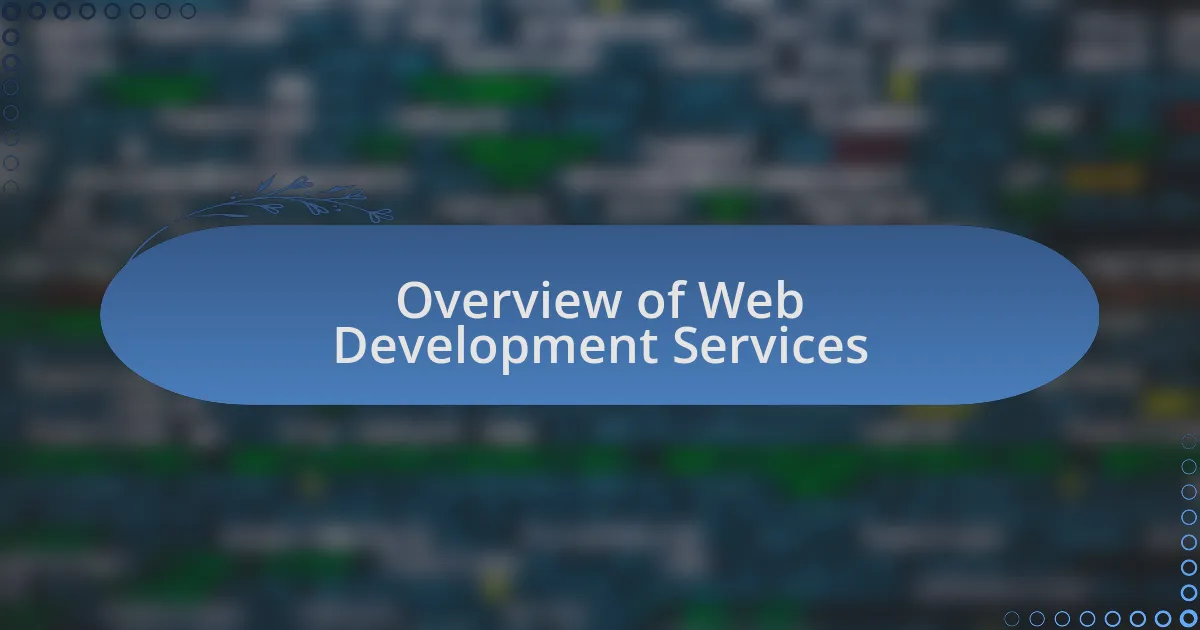
Overview of Web Development Services
Web development services encompass a wide range of activities aimed at creating, maintaining, and optimizing websites. From my experience, I’ve seen how these services can greatly impact both businesses and individuals, acting as the foundation for online presence and user engagement. Have you ever stopped to think about how much effort goes into making your favorite sites user-friendly and visually appealing?
When I first started in web development, I was amazed by the variety of tools and technologies available—like HTML, CSS, and JavaScript. Each of these elements plays a crucial role in shaping the user experience. It’s fascinating how a simple coding choice can influence not just functionality but also how a visitor feels when they navigate a site. Don’t you think that the emotional connection we form with a website often stems from its design and ease of use?
Additionally, the evolution of web development has led to an increased focus on mobile responsiveness and accessibility. I’ve noticed that the best web development services now prioritize these aspects to ensure everyone can enjoy a seamless experience. In a world where mobile browsing is commonplace, how important do you think it is for a site to perform well on both desktop and mobile devices? For me, it’s essential—otherwise, we risk losing valuable traffic and engagement.
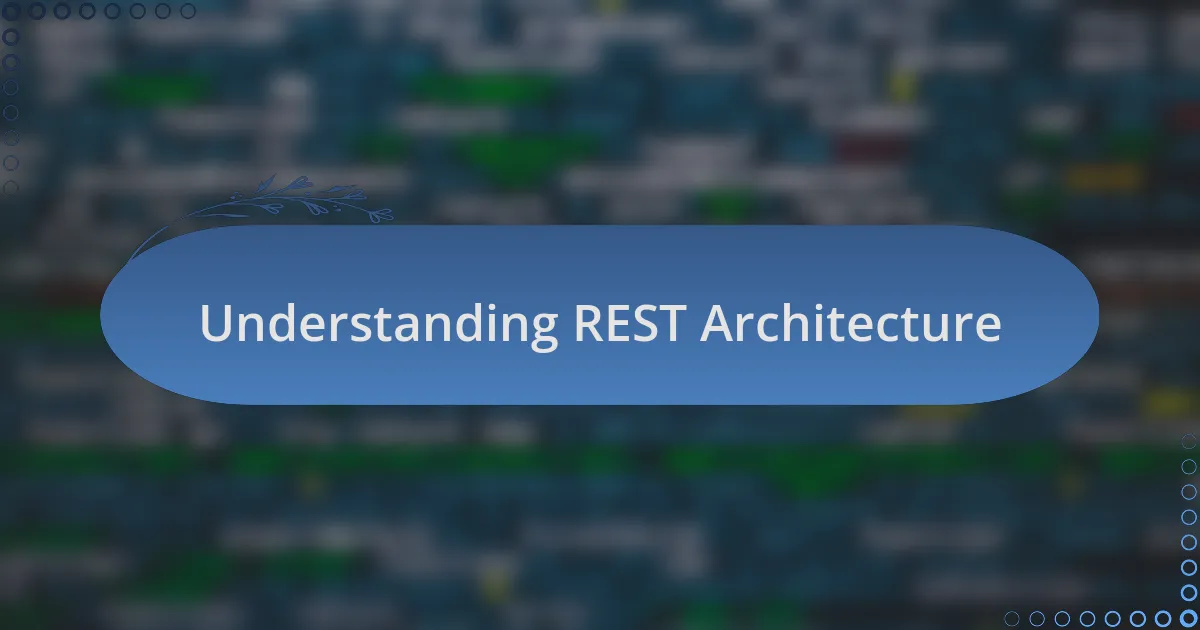
Understanding REST Architecture
Understanding REST architecture is crucial for anyone interested in web development. REST, which stands for Representational State Transfer, is an architectural style that relies on a stateless communication protocol, typically HTTP. I remember the first time I encountered RESTful APIs; it opened up a new world of possibilities in my projects, allowing for seamless interactions between the server and client. Have you ever thought about how APIs can transform your application’s capabilities?
One key aspect of REST is its emphasis on resources, which are identified by URLs. Each resource can be accessed through standard HTTP methods like GET, POST, PUT, and DELETE. I’ve found that this simplicity not only makes it easier to design APIs but also enhances the developer experience. Do you appreciate how a well-structured API can streamline your development process and reduce confusion?
Additionally, REST promotes the separation of client and server, allowing them to evolve independently. This was something I learned firsthand when working on a project that required updating the frontend without altering the backend. That flexibility can really make a difference in how we approach web applications. Have you experienced the benefits of this separation in your own projects? It’s a game-changer when it comes to scaling and maintaining an application.
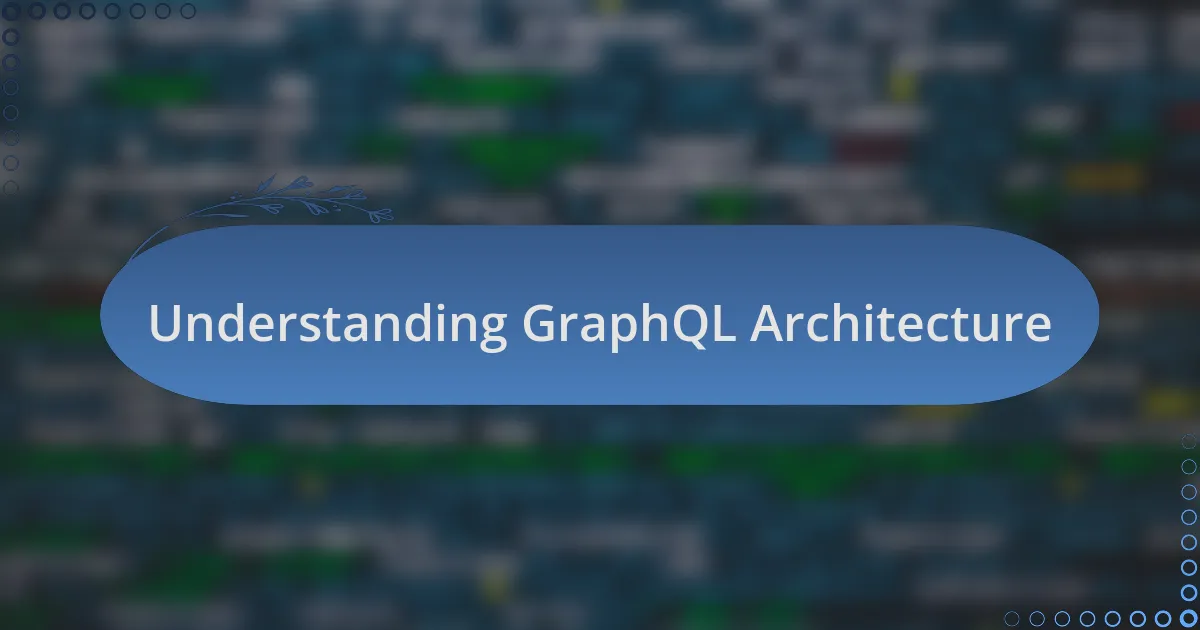
Understanding GraphQL Architecture
Understanding GraphQL architecture is a fascinating journey into how we can query data more efficiently. Unlike traditional REST APIs, GraphQL allows clients to specify exactly what data they need, which I found liberating during a challenging project where data over-fetching was a major issue. Have you ever struggled with retrieving too much information from your APIs? That experience made me appreciate GraphQL’s targeted approach.
The structure of a GraphQL API revolves around a single endpoint, which simplifies interactions compared to REST’s multiple URLs for different resources. This design means you can request only what you need in a single query, which I found immensely useful when working on mobile applications with limited bandwidth. Did you know that this can significantly improve performance and decrease load times? It’s a compelling advantage that I now prioritize in my development decisions.
Moreover, GraphQL uses a strongly typed schema that defines how clients can access data, enhancing the developer experience with built-in validation. I vividly remember the ease of debugging I encountered with this feature; it felt like having a safety net while coding. This strict type system not only fosters better communication but also empowers developers to build more robust applications. How much easier would your projects be with clearer data structures at your fingertips?
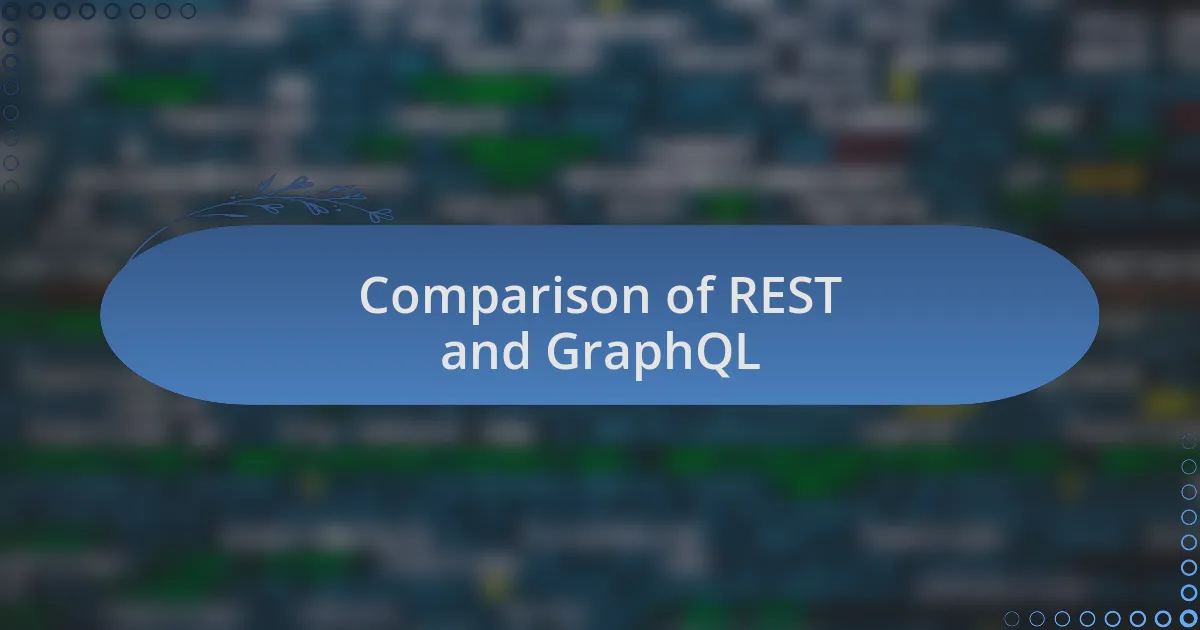
Comparison of REST and GraphQL
When I think about the differences between REST and GraphQL, the disparity in data retrieval patterns stands out to me. REST’s multiple endpoints can often lead to over-fetching, where you receive more data than you actually need. I’ve experienced this firsthand during a project where I had to filter through excessive data to find what was relevant, which was frustrating and time-consuming.
On the other hand, GraphQL’s single endpoint and customizable queries are a game-changer for developers. I vividly remember a moment when I first implemented GraphQL on a new project; it felt as if a weight had been lifted off my shoulders. Being able to request only what I needed was like finding a perfect balance in my coding workflow—no more dealing with unnecessary payloads cluttering my responses. Isn’t it refreshing to streamline interactions and focus solely on what matters?
Finally, the way both technologies handle versioning is worth noting. With REST, versioning often becomes a messy undertaking as new iterations lead to the creation of multiple endpoints. Conversely, GraphQL’s schema evolution allows for more flexibility, letting developers modify data structures without disrupting existing queries. I’ve come to appreciate this approach; it feels like having a dynamic toolbox that grows and adapts rather than being confined to rigid formats. How would your projects thrive if you could avoid the headaches of versioning altogether?
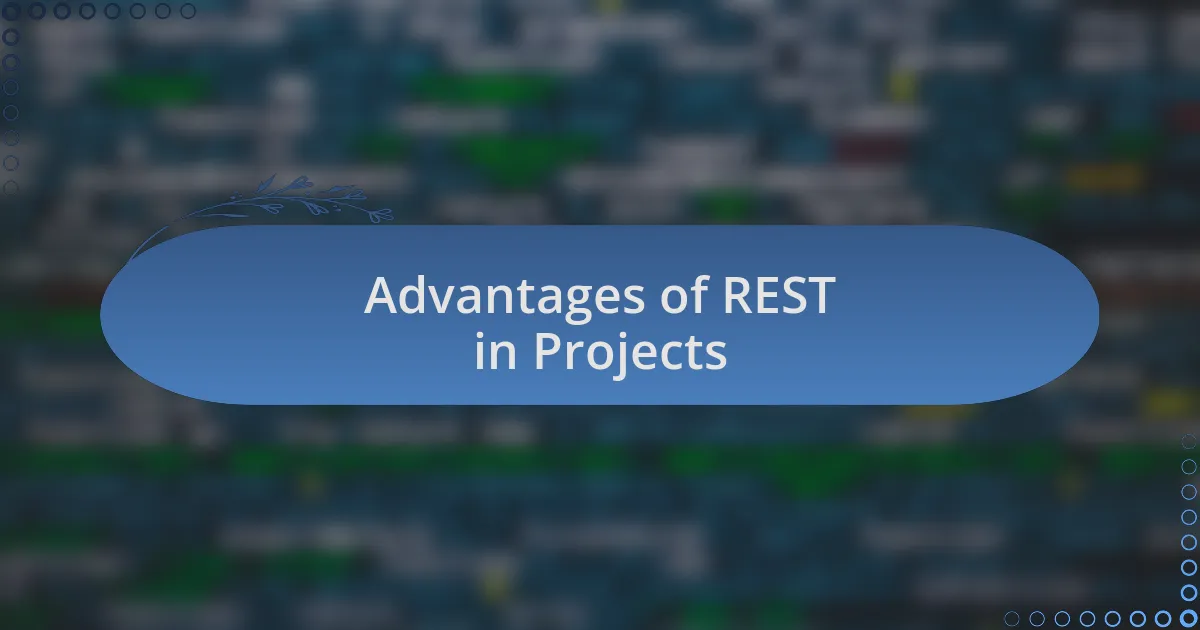
Advantages of REST in Projects
When considering the advantages of REST in projects, one significant benefit is its simplicity and widespread adoption. I remember starting my journey in web development, where REST APIs were everywhere. Having well-defined protocols made it easy to understand and implement, which shortened my learning curve and allowed me to focus on building applications rather than getting lost in overly complicated setups.
Another factor to appreciate is the cacheability of REST responses. In a project where I had to optimize performance, leveraging HTTP caching was a game-changer. It not only improved the speed of data retrieval but also reduced the server load significantly. Can you imagine the relief of knowing that repeated requests wouldn’t continually hit the database? It transformed how I approached scaling applications.
Furthermore, REST’s adherence to the principles of statelessness means that each request from a client contains all the information needed to fulfill that request. I had an experience where this made debugging a breeze; tracking down issues was straightforward because I didn’t have to maintain session states. How much easier would your project discussions be if you could assure your team that each interaction was distinct and self-contained?
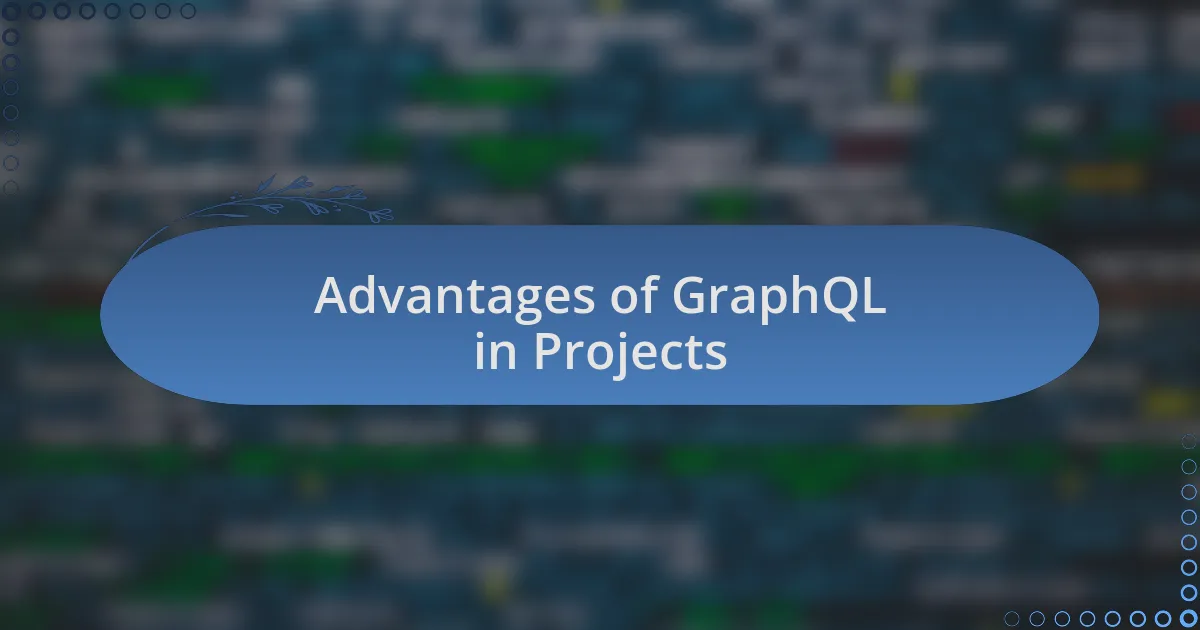
Advantages of GraphQL in Projects
When diving into GraphQL for projects, one standout advantage is its ability to allow clients to request precisely the data they need. I recall a project where the client wanted to minimize data transfer to enhance mobile performance. By using GraphQL, we tailored queries that fetched only the essential information, which not only improved load times but also felt like we were truly listening to the user’s needs. Isn’t it empowering to have that level of flexibility?
Another remarkable aspect is the strong typing system in GraphQL. In one project I encountered, we implemented GraphQL’s schema definitions, which acted like a safety net for both frontend and backend teams. It was a breath of fresh air to see how it reduced miscommunications and alignment issues, as everyone was speaking the same language regarding the expectations of data structures. Can you imagine the efficiency when the entire team shares clear definitions and documentation seamlessly?
Real-time data retrieval is yet another gem of GraphQL that transformed the way my team delivered features. I remember a scenario when we integrated subscriptions for live updates in a chat application. The instant feedback loop made users experience the app as if it were magic, seeing new messages appear without needing to refresh. How satisfying is it to see technology enhancing user experience in ways we once thought were out of reach?
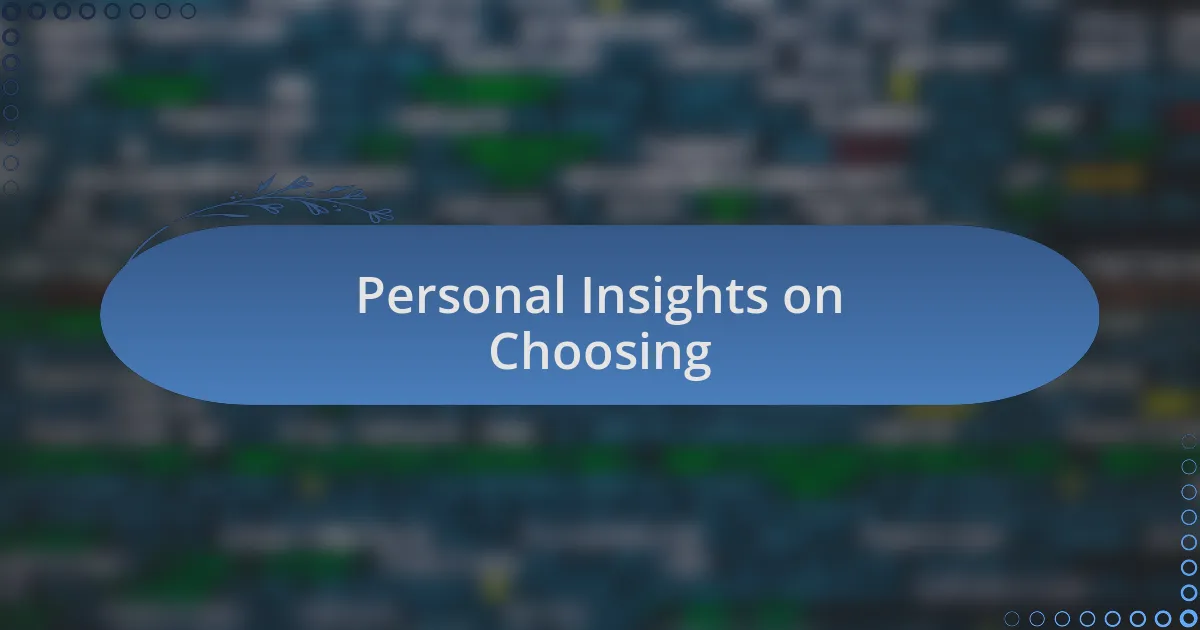
Personal Insights on Choosing
When it comes to choosing between REST and GraphQL, I find that understanding the specific needs of a project is crucial. In one instance, I faced a decision while developing an e-commerce platform. The flexibility of GraphQL seemed like a better fit for supporting various product queries. It made the process feel like a puzzle where each piece had to fit perfectly, and I relished the challenge of optimizing our API around unique user requests.
However, my experience with REST taught me the value of simplicity. A particular project involved integrating multiple third-party services, and I opted for REST due to its straightforward nature. Navigating REST felt like taking a well-trodden path, making the onboarding process for the team smoother. Sometimes, sticking to the basics can lead to a more efficient development experience.
In my journey, I’ve realized the importance of team familiarity with the chosen technology. During a collaboration where we employed GraphQL, I observed the team enthusiastically learning and adapting to innovative querying methods. It’s invigorating to witness collective growth, especially when everyone is on board and actively engaging with new concepts. How often do we underestimate the impact of team morale on project success?